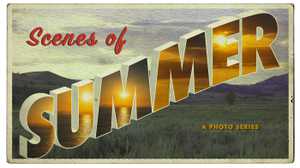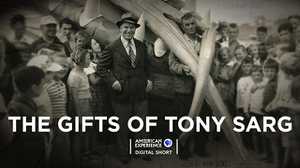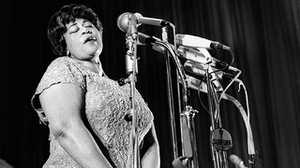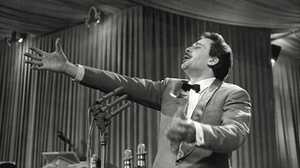Looking Back at the Original Drive-In Movie Theater
How audiences first came to watch movies from behind the wheel.

The first film ever screened at a drive-in movie theater was British. On June 6, 1933, just outside Camden, New Jersey drivers paid 25 cents per car, plus an additional 25 cents per person to watch the English comedy Wives Beware at this quintessentially American institution in the open air. The local Courier-Post newspaper had touted the setting as “the first automobile movie theater in the world.” Parked in their Ford Model Bs and Buick Series 40s that Tuesday night, the attendees knew they were participating in a novel experiment—but they could not have known the extent to which the phenomenon they experienced would spread throughout the country in the next few decades.
The innovator behind this motor-age phenomenon, Richard Milton Hollingshead, Jr., got his start at the Whiz Auto Products Company, founded by his father in the early years of the 20th century to sell automobile accessories such as greases, oils and polishes. In an inspired extension of the family business in the early 1930s, Hollingshead did the first test run (or perhaps, more accurately, a test park) of his concept using a Kodak projector and a screen nailed to a tree in his backyard. For weeks, he experimented with this home theater layout to ensure all passengers would have unobstructed views of the screen. Parking one car behind another, Hollingshead placed blocks under both cars’ front wheels to adjust their height until the driver further back could see over the car in front. He captured what was unique about his idea in a 1932 patent application. “My invention relates to a new and useful outdoor theater,” Hollingshead wrote, “whereby the transportation facilities to and from the theater are made to constitute an element of the seating facilities.”
Despite his venture’s successful opening night, the “world’s first” remained ahead of its time. As an institution, the drive-in’s heyday was in the 1950s, when more than 4,000 screens dotted the American landscape. Still, from the very beginning, Hollingshead had correctly identified one of his invention’s key points of appeal. “Here the whole family is welcome,” he told the Courier-Post, “regardless of how noisy the children are apt to be.” According to the National Association of Theater Owners, 549 drive-ins remained in the U.S. in 2020.

A new AMERICAN EXPERIENCE collection of images celebrating summer in America throughout the 20th century, from historical firsts like the original drive-in movie theater to iconic events like the 1977 New York City blackout.








